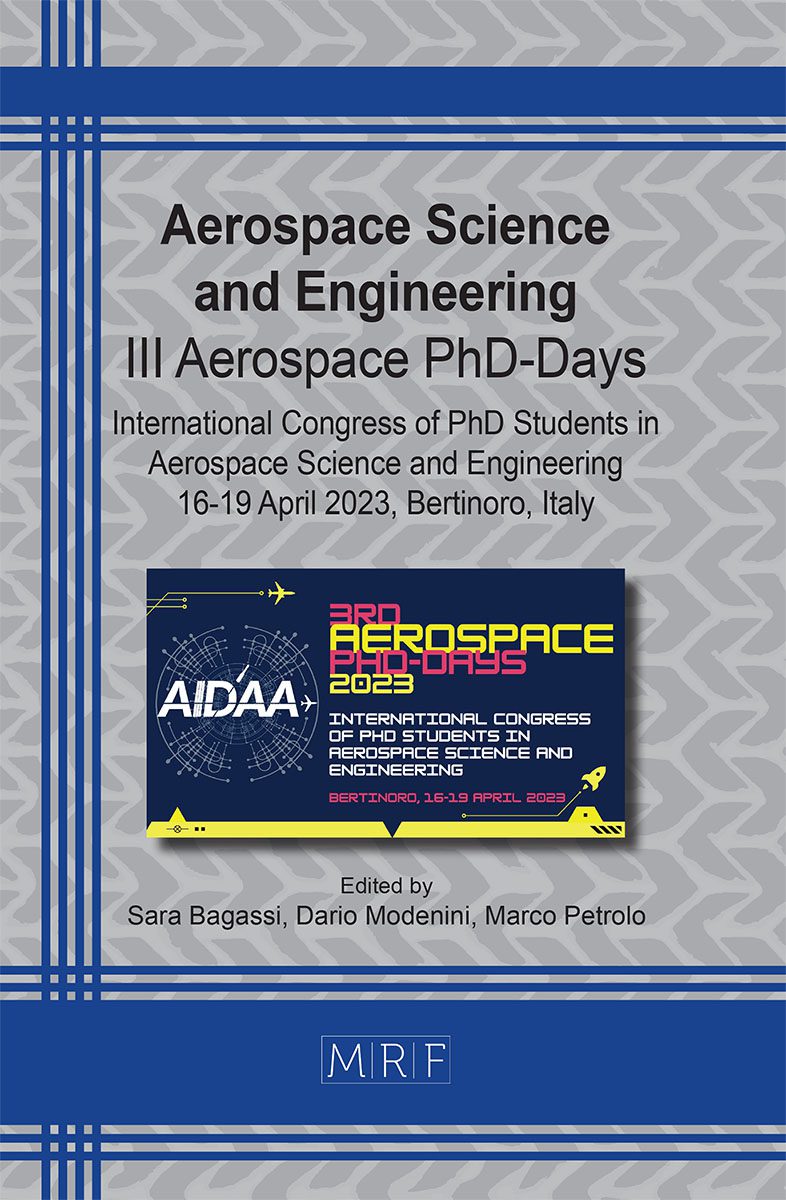iDREAM: A multidisciplinary methodology and integrated toolset for flight vehicle engineering
Giuseppe Narducci, Nicole Viola, Roberta Fusaro, Giuseppe Governale, Jasmine Rimani, Davide Ferretto
download PDFAbstract. For the rapid prototyping of a flight engineering vehicle, data from various building blocks and the required engineering tools for designing critical subsystems are crucial elements. In this context, Politecnico di Torino developed an integrated methodology toolset capable of speeding up the design and validation of various space transportation systems, with a focus on microlaunchers and human landing systems. This research was carried out under the direction of the European Space Agency (ESA).
Keywords
Rapid Prototyping, Multidisciplinary Design Tools, Aerospace Vehicle Design, Technology Roadmaps, Cost Estimation
Published online 9/1/2023, 8 pages
Copyright © 2023 by the author(s)
Published under license by Materials Research Forum LLC., Millersville PA, USA
Citation: Giuseppe Narducci, Nicole Viola, Roberta Fusaro, Giuseppe Governale, Jasmine Rimani, Davide Ferretto, iDREAM: A multidisciplinary methodology and integrated toolset for flight vehicle engineering, Materials Research Proceedings, Vol. 33, pp 315-322, 2023
DOI: https://doi.org/10.21741/9781644902677-46
The article was published as article 46 of the book Aerospace Science and Engineering
![]() Content from this work may be used under the terms of the Creative Commons Attribution 3.0 license. Any further distribution of this work must maintain attribution to the author(s) and the title of the work, journal citation and DOI.
Content from this work may be used under the terms of the Creative Commons Attribution 3.0 license. Any further distribution of this work must maintain attribution to the author(s) and the title of the work, journal citation and DOI.
References
[1] I. S. E. C. G. (ISEGC), “Global Exploration Roadmap 2018,” 2018.
[2] I. S. E. C. G. (ISEGC), “Global Exploration Roadmap – Supplement August 2020 – Lunar Surface Exploration Scenario Update,” 2020.
[3] R. Fusaro, N. Viola, D. Ferretto, V. Vercella, V. Fernandez Villace and J. Steelant, “Life cycle cost estimation for high-speed transportation systems,” 2020. https://doi.org/10.1007/s12567-019-00291-7
[4] R. Fusaro, V. Vercella, D. Ferretto, N. Viola and J. Steelant, “Economic and environmental sustainability of liquid hydrogen fuel for hypersonic transportation systems,” 2020. https://doi.org/10.1007/s12567-020-00311-x
[5] R. Fusaro, N. Viola, D. Ferretto, V. Vercella and J. Steelant, “Life-cycle cost estimation for high-speed vehicles: From engineers’ to airlines’ perspective,” 2020. https://doi.org/10.2514/6.2020-2860
[6] N. Drenthe, “SOLSTICE: Small Orbital Launch Systems, a Tentative Initial Cost Estimate,” 2016.
[7] G. Reinbold, “Successful Cost Estimation with T1 Equivalents,” in ICEAA Int. Train. Symp, 2016.
[8] NASA, “NASA Cost Estimating Handbook,” 2015.
[9] M. Carvalho, A. Fleury and A. Lopes, “An overview of the literature on technology roadmapping (TRM): Contributions and trends,” Technol. Forecast. Soc. Change. 80, p. 1418-1437, 2013. https://doi.org/10.1016/j.techfore.2012.11.008
[10] H. Abe, “The Innovation Support Technology (IST) Approach: Integrating Business Modeling and Roadmapping Methods,” in M. Moehrle, R. Isenmann, R. Phaal (Eds.), Technol. Roadmapping Strateg. Innov., Berlin, Heidelberg, Springer, 2013, p. 173-188. https://doi.org/10.1007/978-3-642-33923-3_11
[11] H. Geschka and H. Hahnenwald, “Scenario-Based Exploratory Technology Roadmaps – A Method for the Exploration of Technical Trends,” in M. Moehrle, R. Isenmann, R. Phaal (Eds.), Technol. Roadmapping Strateg. Innov., Berlin, Heidelberg, Springer, 2013, p. 123-136. https://doi.org/10.1007/978-3-642-33923-3_8
[12] D. Kanama, “Development of Technology Foresight: Integration of Technology Roadmapping and the Delphi Method,” in M. Moehrle, R. Isenmann, R. Phaal (Eds.), Technol. Roadmapping Strateg. Innov., Berlin, Heidelberg, Springer, 2013, p. 151-171. https://doi.org/10.1007/978-3-642-33923-3_10
[13] M. Moehrle, “TRIZ-based technology roadmapping,” in M. Moehrle, R. Isenmann, R. Phaal (Eds.), Technol. Roadmapping Strateg. Innov. Charting Route to Success, Berlin, Heidelberg, Springer, 137-150, p. 2013. https://doi.org/10.1007/978-3-642-33923-3_9
[14] R. Phaal, C. Farrukh and D. Probert, “Fast-Start Roadmapping Workshop Approaches,” in M. Moehrle, R. Isenmann, R. Phaal (Eds.), Technol. Roadmapping Strateg. Innov., Berlin, Heidelberg, Springer, 91-106, p. 2013. https://doi.org/10.1007/978-3-642-33923-3_6
[15] D. Knoll, A. Golkar and O. De Weck, “A concurrent design approach for model-based technology roadmapping,” 12th Annual IEEE International Systems Conference, SysCon 2018 – Proceedings, p. 1 – 6, 2018. https://doi.org/10.1109/SYSCON.2018.8369527
[16] M. Viscio, N. Viola, R. Fusaro and V. Basso, “Methodology for requirements definition of complex space missions and systems,” Acta Astronautica, pp. 79-92, 2015. https://doi.org/10.1016/j.actaastro.2015.04.018
[17] R. Shishko, “NASA systems engineering handbook,” 2007.
[18] R. Lab, “Electron, User’s Guide,” Rocket Lab, [Online]. Available: rocketlabusa.com.
[19] NASA, NASA’s exploration system architecture study, 2005.
[20] J. F. Connolly, After LM – NASA LUNAR LANDER CONCEPTS BEYOND APOLLO, 2019.
[21] I. Masafumi, M. Ian and C. Bernd, “A New Sizing Methodology for Lunar Surface Access Systems,” AIAA Scitech 2020 Forum, 2020.












